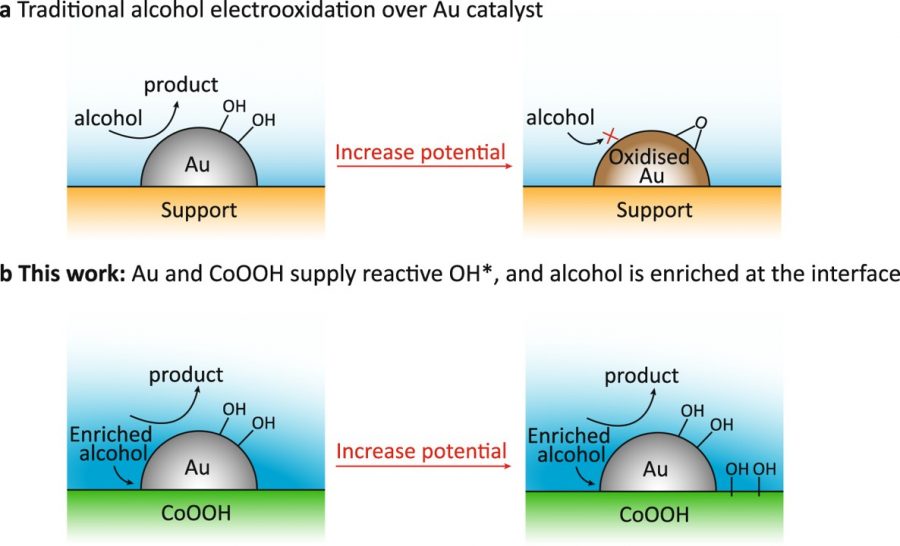30. Photoelectrocatalytic C-H halogenation over an oxygen vacancy-rich TiO2 photoanode
Li, Z., Luo, L., Li, M., Chen, W., Liu, Y., Yang, J., Xu, S. M., Zhou, H., Ma, L., Xu, M., Kong, X., Duan, H.*
Nat Commun 2021, 12 (1), 6698.
DOI: 10.1038/s41467-021-26997-z
Abstract
Photoelectrochemical cells are emerging as powerful tools for organic synthesis. However, they have rarely been explored for C–H halogenation to produce organic halides of industrial and medicinal importance. Here we report a photoelectrocatalytic strategy for C–H halogenation using an oxygen-vacancy-rich TiO2 photoanode with NaX (X=Cl−, Br−, I−). Under illumination, the photogenerated holes in TiO2 oxidize the halide ions to corresponding radicals or X2, which then react with the substrates to yield organic halides. The PEC C–H halogenation strategy exhibits broad substrate scope, including arenes, heteroarenes, nonpolar cycloalkanes, and aliphatic hydrocarbons. Experimental and theoretical data reveal that the oxygen vacancy on TiO2 facilitates the photo-induced carriers separation efficiency and more importantly, promotes halide ions adsorption with intermediary strength and hence increases the activity. Moreover, we designed a self-powered PEC system and directly utilised seawater as both the electrolyte and chloride ions source, attaining chlorocyclohexane productivity of 412 µmol h−1 coupled with H2 productivity of 9.2 mL h−1, thus achieving a promising way to use solar for upcycling halogen in ocean resource into valuable organic halides.



